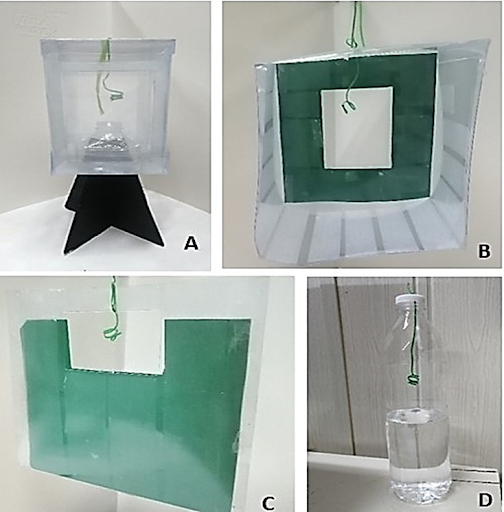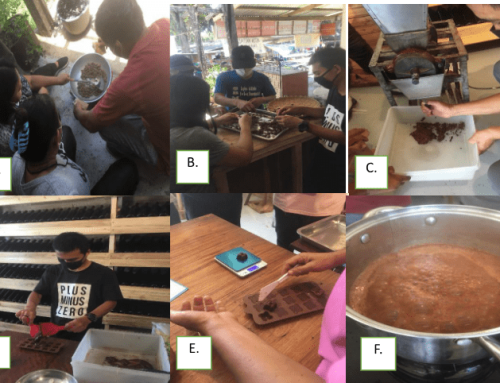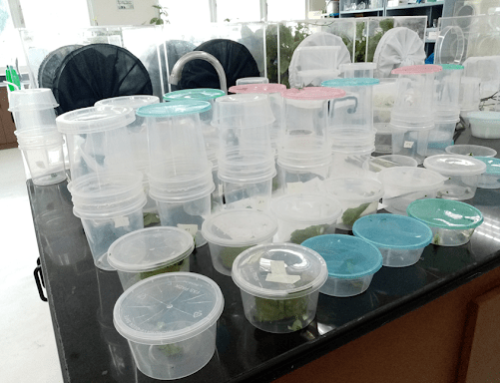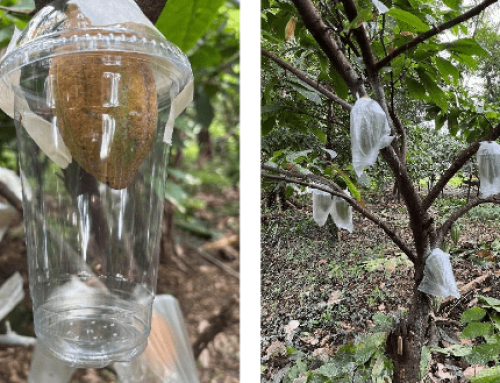In this Article

Cacao from which chocolates are made is a globally important crop that can only grow in places situated near the equator. The Philippines is among the few countries that can cultivate it. As the demand for cacao continues to rise, the country aims to capitalize on this opportunity. But, local production is hampered by numerous threats such as insect infestationa that significantly decrease yield and quality of produce. The cacao mirid bug (CMB) [Helopeltis bakeri Poppius] and the cacao pod borer (CPB) [Conopomorpha cramerella Snellen] are among the major insect pests of cacao in the country. In this project, semiochemicals which are natural chemical signals that alter insect behavior were used as an alternative pest control strategy for both CMB and CPB. From the Phase I of the program, semiochemicals (i.e., kairomones and pheromones) associated with CMB were identified. Formulations of these compounds were optimized using laboratory bioassays and field tests. Results showed positive attraction of CMB in olfactometer and wind-tunnel bioassays. However, further optimization is needed to improve trapping in the field. For the CPB trapping system, traps with lures impregnated with previously identified sex pheromones showed effectiveness in trapping male CPB in the field as validated by field trials in North Cotabato, Sultan Kudarat, and Davao City.








